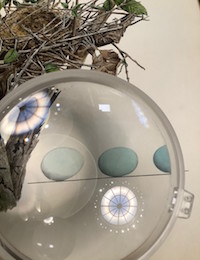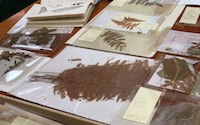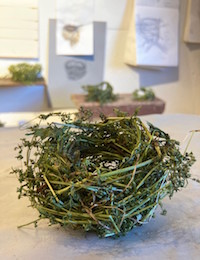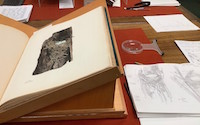Brece Honeycutt
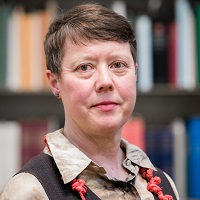
Research at AAS
For the American Antiquarian Society Fellowship, I proposed to examine historical texts for their plant and land based content, seeking primary sources directly related to plant uses —in healing, dyeing, and food. I also wanted to look for uses of ‘weeds’ [plants often deemed useless] and the presence of ‘removed words’ [nature related words were removed from the Oxford Junior Dictionary in 2016]. From this collection of facts and images, I proposed to make a series of artworks that demonstrate at their core a respect for the natural world in ages past, with a view to translate a contemporary understanding of the sacredness of our natural resources.
During my initial meeting with Nan [Wolverton, AAS fellowship director], she mentioned that often one finds an item that changes the path of research. For me there were two items- Illustrations of the Nests and Eggs of Birds of Ohio by Howard Jones and Emily Dickinson’s poetry. At the start of the second week, I spent two days examining the Jones book. The illustrations of the nests are drop dead gorgeous, but the descriptions of the materials that the birds used to make nests is what struck me—many of them are constructed using weeds. Weeds, plants that are considered useless, are dear to my heart and realizing that birds used them stopped me in my tracks. I began to search the catalogue for all related bird books. I examined four Emily Dickinson poems – a milestone moment. When I opened the folder, the poem on top was one of my favorites— “The Dandelion’s Pallid Tube astonishes the Grass.” I could see where a dandelion had been pressed into the letter and tears formed. Thank you for allowing me to hold these sacred pieces of paper, to see the structure of her poems, to witness Dickinson’s handwriting, and to see the folds and type of paper.
On one afternoon a reader stopped by my desk and asked me what I was looking at. The table was filled with the removed botanicals from books. He asked, “Why do people save those leaves?” as if this act was silly and trite. Ironically, I haven’t been able to stop thinking of this and posit, if people can save plants and leaves, why not save on a larger level, why not save the planet? How to translate this into an artwork or more importantly an action, a classroom activity? Another day, this same reader stopped by at the moment, I was examining a colored plate of a dandelion. I expounded on the benefits of dandelions— food for bees, nourishment for the body, dyes for cloth and their sheer beauty, but these facts were met with disdain. He replied that he was too invested in his lawn to allow these weeds amongst the grass. How to educate and stop people from using chemicals to wipe out beneficial plants, to make them aware of their goodness?


